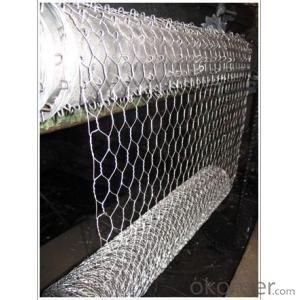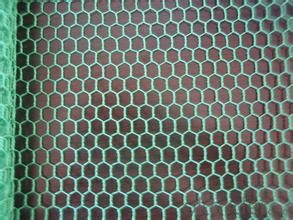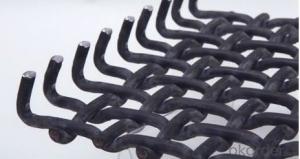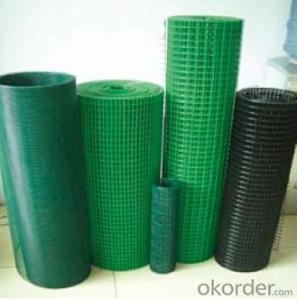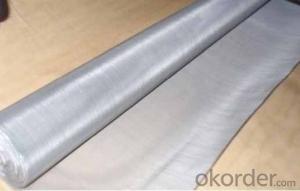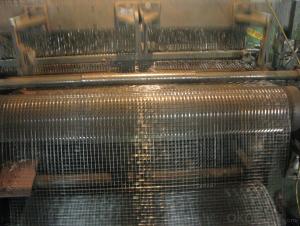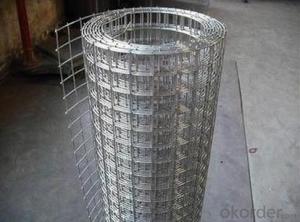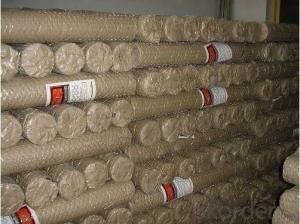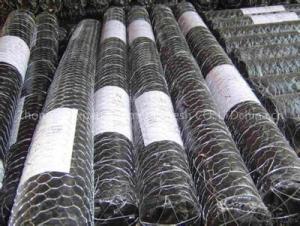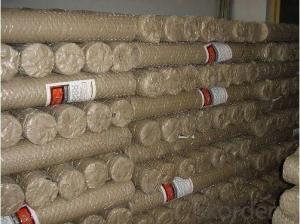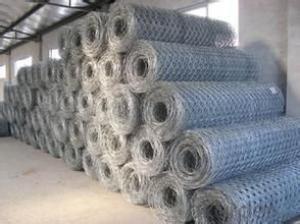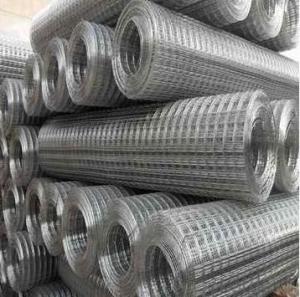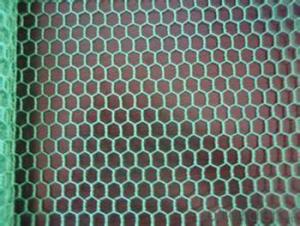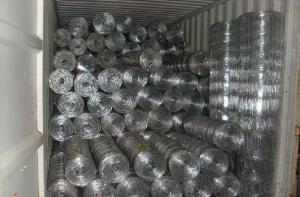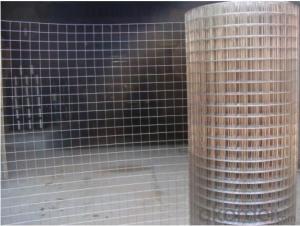Galvanized Hexagonal Wire Netting-3 inch
- Loading Port:
- China Main Port
- Payment Terms:
- TT or LC
- Min Order Qty:
- 50 roll
- Supply Capability:
- 5000 roll/month
OKorder Service Pledge
OKorder Financial Service
You Might Also Like
Introduction of Galvanized Hexagonal Wire Mesh
Galvanized Hexagonal Wire Mesh is made of by high quality galvanized wire, Low carton steel wire, stainless steel wire, iron wire, Galvanized steel wire.
Application of Galvanized Hexagonal Wire Mesh
Galvanized Hexagonal Wire Mesh is widely used in industrial and agricultural constructions, Rockwool, fence for poultry cage, fishing cage, playground fence and Christmas decorations
Surface treatment of Galvanized Hexagonal Wire Mesh
a. Black (mild steel wire)
b. Electro galvanized, (galvanized before welding, galvanized after welding)
c. Hot dip galvanized, (galvanized before welding, galvanized after welding)
d. Stainless Steel Wire
Advantage of Galvanized Hexagonal Wire Mesh
Our Galvanized Hexagonal Wire Mesh has strong corrosion-resisting and oxidation-resisting, stable shape, clean ends, good packing with good quality and rock bottom price.
Packing of Galvanized Hexagonal Wire Mesh
1. Waterproof paper then PVC shrinked
2. PVC shrinked only
3. Black waterproof paper only
4. Waterproof paper then metal/wooden pallet
5. Plastic film then carton
(Also as your request. )
Pictures of Galvanized Hexagonal Wire Mesh
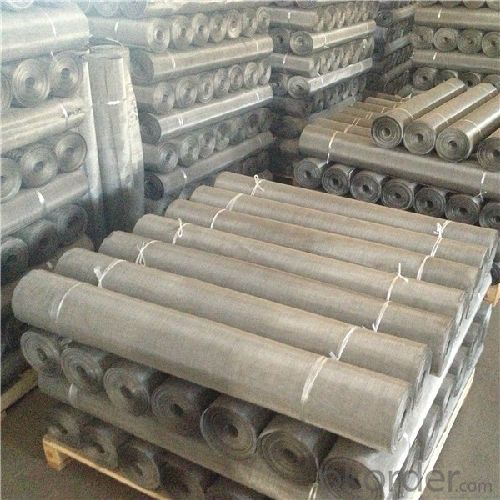
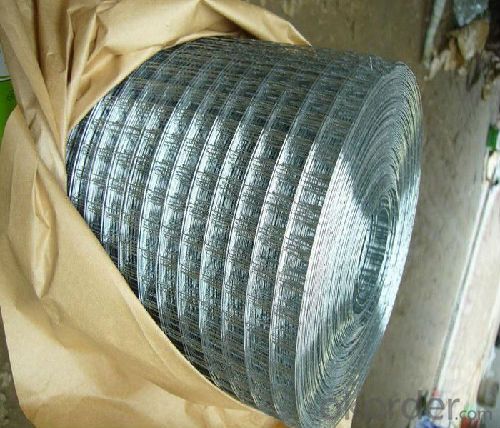
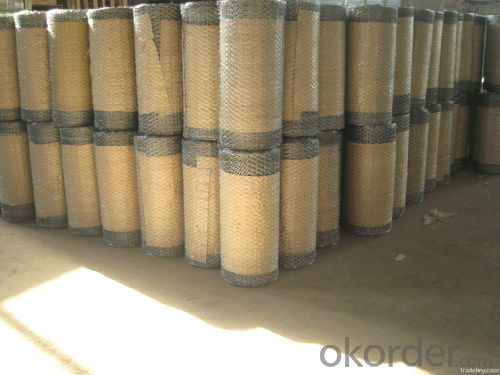
Specification of Galvanized Hexagonal Wire Mesh
Galvanized Hexagonal Wire Mesh-Normal Twist | ||||||||||||||||||||||||||||||||||||||||||||||||||||||||||||||||||||||||
| ||||||||||||||||||||||||||||||||||||||||||||||||||||||||||||||||||||||||
Galvanized Hexagonal Wire Mesh-Revise Twist | ||||||||||||||||||||||||||||||||||||||||||||||||||||||||||||||||||||||||
| ||||||||||||||||||||||||||||||||||||||||||||||||||||||||||||||||||||||||
FAQ
We have organized several common questions for our clients,may help you sincerely:
1. How about your company?
A world class manufacturer & supplier of welded wire mesh and is one of the large-scale professional investment Galvanized Hexagonal Wire Mesh bases in China. Annually more than 1000 containers of welded wire mesh are exported to markets in Europe, America and Japan.
2. What is the storage condition?
The Galvanized Hexagonal Wire Mesh should be stored at room temperature and kept from wet and heat source.
3. How to guarantee the quality of the products?
We have established the international advanced quality management system,every link from raw material to final product we have strict quality test;We resolutely put an end to unqualified products flowing into the market. At the same time, we will provide necessary follow-up service assurance.
4. How long can we receive the product after purchase?
In the purchase of product within four working days, we will arrange the factory delivery as soon as possible. The specific time of receiving is related to the state and position of customers. Commonly 7 to 10 working days can be served.
- Q: What are the different fastening methods for steel wire mesh?
- The different fastening methods for steel wire mesh include using clips or hog rings, tying with wire, using metal brackets or clamps, and utilizing zip ties or cable ties.
- Q: Can steel wire mesh be used for machinery guards?
- Yes, steel wire mesh can be used for machinery guards as it provides a sturdy barrier that prevents access to hazardous areas while allowing visibility and ventilation.
- Q: Can steel wire mesh be used for reinforcement in concrete?
- Yes, steel wire mesh can be used as reinforcement in concrete. It helps to enhance the structural strength and durability of the concrete by providing additional tensile strength and preventing cracking. The mesh is typically placed in the middle of the concrete slab or wall before pouring to distribute the stress evenly and improve its overall performance.
- Q: Is steel wire mesh suitable for use in walkways or catwalks?
- In general, steel wire mesh is a suitable choice for walkways or catwalks. It is renowned for its strength, durability, and ability to resist corrosion, making it an excellent material for applications where safety and reliability are paramount. Its robust surface can withstand heavy loads and foot traffic, making it appropriate for walkways and catwalks in a range of industries, including construction, manufacturing, and mining. Furthermore, the open design of steel wire mesh allows for proper drainage and ventilation, which is particularly significant for outdoor walkways or catwalks exposed to the elements. All in all, steel wire mesh is a dependable and practical option for walkways and catwalks due to its strength, durability, resistance to corrosion, and versatility.
- Q: What is the maximum width of steel wire mesh available?
- The maximum width of steel wire mesh available depends on various factors such as the specific manufacturer, type of mesh, and intended application. That being said, steel wire mesh typically comes in standard widths ranging from 36 inches (91.44 cm) to 72 inches (182.88 cm). However, custom sizes and widths can also be produced by certain manufacturers to cater to specific project requirements. It is advisable to consult with a supplier or manufacturer to determine the maximum width available for a particular type of steel wire mesh.
- Q: Can steel wire mesh be used as a reinforcement in soil?
- Yes, steel wire mesh can be used as a reinforcement in soil. It is commonly used in geotechnical engineering applications to provide additional strength and stability to soil structures. The steel wire mesh is typically placed within the soil mass to increase its tensile and shear strength, prevent erosion, and improve the overall stability of the soil. It can be particularly useful in areas with poor soil conditions or where there is a need for additional reinforcement due to heavy loads or vibrations. The steel wire mesh acts as a reinforcement element, distributing the applied loads and reducing the potential for soil movements and failures. Additionally, the use of steel wire mesh as a reinforcement in soil can also enhance the longevity and durability of the soil structure.
- Q: How is steel wire mesh used in reinforcement of pharmaceutical and healthcare facilities?
- Steel wire mesh is commonly used in the reinforcement of pharmaceutical and healthcare facilities to provide structural support and enhance the safety and durability of the building. It is used in various applications such as reinforcing concrete floors, walls, and ceilings, as well as in the construction of storage areas, laboratories, and cleanrooms. The steel wire mesh helps to prevent the formation of cracks, increase load-bearing capacity, and ensure the overall integrity of the facility, thus ensuring a safe environment for pharmaceutical and healthcare operations.
- Q: What are the different fastening methods for steel wire mesh?
- Steel wire mesh can be secured in various applications using different fastening methods. Some commonly used methods include: 1. Industrial settings often utilize welding as a popular fastening method for steel wire mesh. By melting the wire mesh and adjoining material, a strong bond is created. This method is ideal for permanent installations that require strength and durability. 2. Quick and easy, zip ties (also known as cable ties or wire ties) are a popular choice for fastening steel wire mesh. These plastic ties are threaded through the mesh and tightened to secure it. Zip ties are commonly used in temporary installations or situations where frequent adjustments are necessary. 3. When securing steel wire mesh panels together, clips and clamps are commonly employed. These accessories, made of metal or plastic, grip the edges of the mesh to hold it in place. Clips and clamps provide a secure and reliable fastening method while allowing for easy disassembly and reassembly if needed. 4. Screws or nails can also be used to fasten steel wire mesh, especially in construction and woodworking projects. This method is suitable when the mesh needs to be attached to a solid substrate like wood or metal. Screws and nails offer a sturdy and permanent fastening solution. 5. Cable lacing, also known as lacing cord or lacing wire, is a traditional method of fastening steel wire mesh. It involves threading a thin wire or cord through the mesh and securely tying it. Cable lacing is often used in applications that require flexibility and adjustability. 6. Adhesives can be an option for fastening steel wire mesh to surfaces. Specialized adhesives designed for bonding metal can be applied to the mesh and substrate, creating a strong and permanent bond. However, this method should be carefully considered based on specific requirements and conditions. Overall, the choice of fastening method for steel wire mesh depends on factors such as the application, installation requirements, and desired permanence. Strength, durability, and ease of installation should all be considered when selecting the appropriate method for a specific project.
- Q: How is steel wire mesh used in reinforcement of manufacturing facilities?
- Manufacturing facilities commonly use steel wire mesh for various purposes in their reinforcement. A primary application is in concrete reinforcement, where the steel wire mesh is embedded within the concrete structure. This enhances the structural integrity and load-bearing capacity of the concrete, which is particularly important for facilities using heavy machinery and equipment. The presence of steel wire mesh prevents concrete structures from cracking, sagging, or failing. In addition to concrete reinforcement, steel wire mesh is also utilized for reinforcing walls and partitions within manufacturing facilities. This provides added strength and stability to ensure that these walls can withstand external forces and pressures. This is especially crucial in facilities with high vibrations or potential impacts, such as those caused by heavy machinery or forklift movements. Furthermore, steel wire mesh serves safety purposes in manufacturing facilities. It can be installed as a protective barrier around hazardous areas or machinery to prevent accidents and injuries. Acting as a physical barrier, steel wire mesh allows visibility and ventilation while restricting access to dangerous areas. Moreover, steel wire mesh finds application in the reinforcement of storage racks and shelves within manufacturing facilities. Incorporating wire mesh panels or decking in these storage systems improves their structural integrity, enabling the safe and efficient storage of heavy items and materials. Overall, steel wire mesh is an indispensable component in the reinforcement of manufacturing facilities. Its versatility, durability, and strength make it an ideal choice for enhancing the structural integrity of concrete, walls, partitions, and storage systems, while also providing crucial safety measures. Consequently, steel wire mesh ensures a safe and efficient working environment in manufacturing facilities.
- Q: Can steel wire mesh be used for greenhouse structures?
- Yes, steel wire mesh can be used for greenhouse structures. It is a durable and strong material that can provide support, ventilation, and protection for plants inside the greenhouse. Additionally, the open design of the mesh allows for good airflow and light penetration, creating a suitable environment for plant growth.
Send your message to us
Galvanized Hexagonal Wire Netting-3 inch
- Loading Port:
- China Main Port
- Payment Terms:
- TT or LC
- Min Order Qty:
- 50 roll
- Supply Capability:
- 5000 roll/month
OKorder Service Pledge
OKorder Financial Service
Similar products
Hot products
Hot Searches
Related keywords
